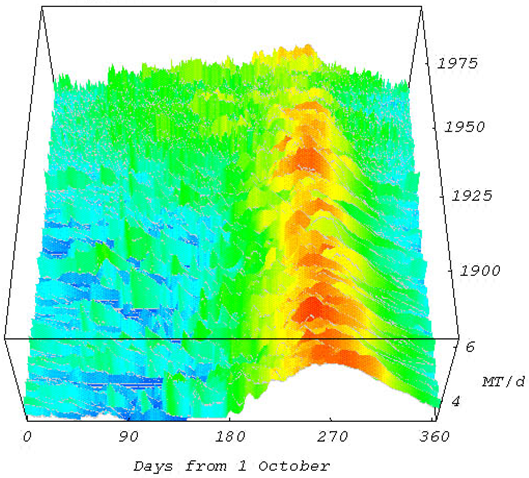Sediment supply and trapping refers to the dynamics of particulate organic matter, including drift and other geomorphological changes (i.e., bathymetric structure).
The figure at bottom left shows total sediment load in the Columbia estuary at Vancouver for observed flow, 1878-1999 (Log10) (Jay 2003).
The figure at bottom right shows net sediment accretion and erosion rates (cm/y) in the lower Columbia estuary between 1868 and 1958 (Sherwood et al. 1990).
Structures that affect sediment supply and trapping:
Scrub-Shrub Forest
Emergent Marsh
Mud/Sand Flat
Submerged Aquatic Vegetation
Shallow Slope
Deep Channel
Ecosystem functions that are affected by sediment supply and trapping:
Flood Attentuation
Interactions & Equations:
Additional information:



